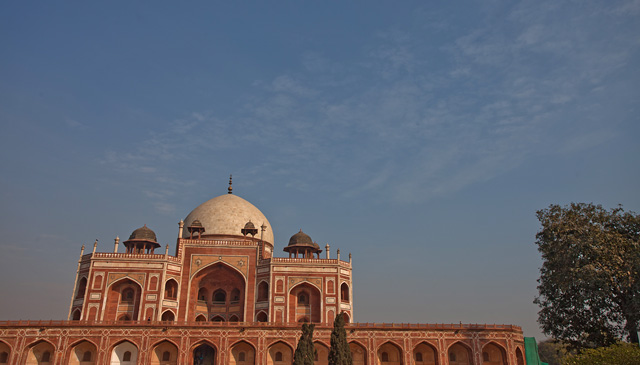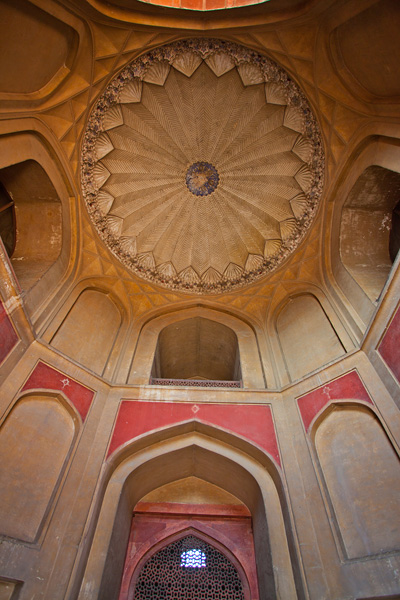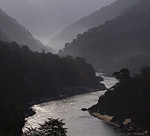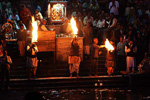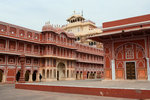Chandni Chowk, Delhi
This article on a walk in Chandni Chowk was recently published in a travel magazine for its June edition.
Armed with my pre-paid counterfoil, a policeman led me to an auto-rickshaw and instructed the driver to take me to Chandni Chowk. The driver silently signaled me to take the seat at the back, and started his rickety rickshaw. But once on the way, he spit out unprintable words cursing the policeman and his luck for having to go somewhere he did not wish to.
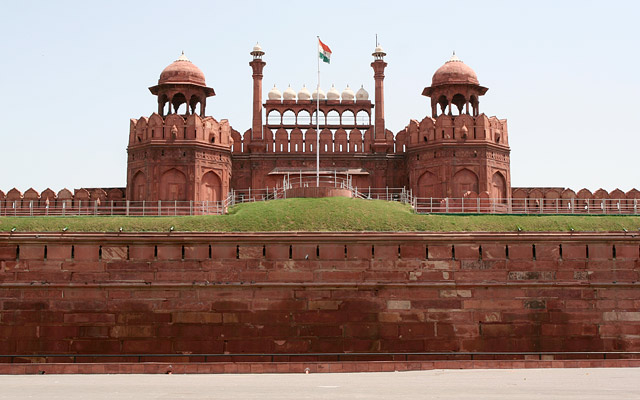
Chandni Chowk is a busy street – a complete contrast to open spaces, green lawns, leafy corners and quiet environs of the imposing landmark of Red Fort just next to it. The bustling market area of the street is full of people hurriedly moving from place to place, either buying and selling goods or offering services to people who come there to buy and sell.
Walking on the crowded avenue, I don’t see any clues to indicate the glorious yester years it is known for. In its heydays during the Mughal rule, Chandni Chowk was known for its spacious streets, palatial havelis and luxuries unseen in rest of Asia. Traders coming from corners of the continent like Kashgar and Kabul flocked the street, brining in goods to amuse the Mughal elite. A canal ran through the center of the main street carrying waters of River Yamuna, reflecting moonlight on bright nights, giving Chandni Chowk its name.
But today, what is seen in the place of the canal is a less appealing road-divider. A few havelis have survived unattended as crumbling evidences of the illustrious past. But the traders remain, albeit the local ones, selling less luxurious goods.
Buildings on either side of the street are packed with shops. They mostly sell clothes on the main street, but on exploring small claustrophobic lanes leading out of Chandni Chowk, called Katras, I find every conceivable goods under the sky. The shops still have a feel of ancient days and look like a far cry from the plush, brightly lit shopping areas of New Delhi. A McDonalds with its bright red backlit display stands apart from its neighbors, trying to be the first to bring an onslaught of change that is imminent. But rest of the street is long way from buckling to the wave of modernization.
I walk along the footpath, trying to make some space for myself in the middle of fast moving crowd. Every now and then I am intercepted by hopeful salesmen trying to get my attention and pull me into their shop.
“Do you want some women’s clothes?” some one asks me, “May be Salwar Kameez?”
I am not sure how successful he would be in selling women’s stuff to men; but he would know better.
A little ahead, another man is slightly more reasonable – “Would you like to buy shirts or trousers?” he asks.
But I am in no mood for shopping, nor do I need shirts or trousers. Its already dark and I have much of Chandni Chowk ahead of me, waiting to be explored. I increase my pace a little, trying to escape from frequently appearing salesmen. But whenever I look around casually and pause to see some wares, the shopkeepers jump at the opportunity.
“aao jee aao,” I hear them say – “come sir, come.” I have to ignore them and keep moving or a few truckloads of clothes will be pushed on me before I know.
But soon I get into a situation that requires me to go shopping. Stopping to get into Sis Ganj Gurudwara, I need something to cover my head. I always keep a hanky in my pocket, but at the right time when I need it, can’t find one. I walk into a nearby shop and ask the man at the desk for a hanky.
He nods at me, searches through a rack for a long time and comes back to me with a box. I am hoping to see a box full of handkerchiefs to pick from, but when he opens it, there is exactly one piece of bright white cloth lying folded at the bottom. I look up to him, hoping that he will show me more. But he is staring at me intently, almost telling me to pick the one he has shown. There is a brief pause; he wants me to act while I am hoping that he will. A few uneasy seconds pass before I break the silence –
“Do you have more?”
“This is the last piece left,” he responds expectantly, hoping that I pick it.
Lack of choice bothers me, and I try to step out, thanking him politely. But he is unhappy, and also seemed surprised that I am not buying ‘the one’. Unable to contain himself, he wants to know why am I not taking it. I am left with the job of finding an excuse to satisfy him. The salesperson at the next shop turned out much better: he pampers me with choices and I choose one in less than a minute.
Inside the Gurudwara, it is a sea change from the bustle of the market. Its spacious interiors, built from plush granite, shield from the outside noise. There are a good hundred people quietly meditating inside, and the prayers sung from the arena next to Guru Granth Sahib is soothing. I sit there along with the meditating pious lot for a few minutes, and reluctantly make my way out to explore more of Chandni Chowk.
The street is a miniature India in every essence: the chaos that define India are there to be seen in every corner. Haphazardly parked vehicles, loudspeakers installed on the street making a gurgling sound and emitting something incomprehensible, people everywhere, sleek modern cars and ancient ricketies going side by side on the streets. And within all this is some unseen order which ensure that everything some how keeps working smoothly. Even the religious diversity on the street is the essence of the whole country. At the beginning of the street is a large Jain Temple. A short walk takes me past a Church, followed by a Hindu temple and then a Gurudwara. At the far end of the road is a Mosque, all of them together screaming about the variety that the country is. It is easy to get carried away in this pandemonium of Chandni Chowk but never understand how the system manages to work and stay afloat. But the country survives this way, moving forward, keeping crises and achievements side by side.
Food is another thing to look forward to in Chandni Chowk. Parathewali Gali is a small easy-to-miss lane leading out of the main street, but is credited with some century old acclaimed establishments serving more than a dozen varieties of delicious Parathas.
‘Estd 1889,’ proclaims a sign proudly, and claims of ‘six generations of expertise’ in making Parathas. The fame of these shops is evident when I see pictures of visiting dignitaries in another shop, which lists a few former prime ministers. Another sign on a shop says their Parathas are made with ‘shudh desi ghee’. These deep fried Parathas are not for the calory conscious, and can leave you with excess supply of energy that takes days to burn. I am tempted to devour on them, but a heavy late lunch with a friend that afternoon has kept me full, leaving no space for more fatty stuffing.
Lines of food carts draw me towards Nai Sarak, a street next to Chandni Chowk. A cart loaded with pancake rolls stuffed with tomatoes, paneer and potatoes looks attractive; I ask the vendor for one. He picks one and heats it on a stove, cuts it into smaller pieces, tops it up with a brownish sweet sauce and then a greenish hot sauce over that before serving them in a bowl made of dried leaves.
I continue walking as I take a bite and am instantly carried to heaven. It tastes as good as it looks, with a sweet-and-sour feel melting instantly in my mouth and leaving me feeling good. I walk back to the vendor to convey my appreciation, whose face lights up and expands with a beaming smile when I say “bahut achha hai!”.
“This is called Paneer Chilla,” he explains, “its made of moong dal”.
Further ahead on Chandni Chowk, Billimoria is like an ocean of shoe shops. Shop after shop sells shoes, shoes and only shoes. It could well be the idea of shangri-la for women, but surprisingly I don’t see many members of the fairer sex.
I retrace my path after a quick visit to red sandstone structure of Fatehpuri Masjid at the other end of the street. To get back to my hotel, I now take the swank Delhi Metro from Chandni Chowk station instead of hailing an auto-rickshaw. So close to the ancient city full of crumbling structures, the sleek air conditioned station and fast moving trains are a symbol of emerging modern India and its future. It is visible everywhere – India is a country full of contrasts – where the old and new, good and bad, rich and poor exist together, side-by-side.
